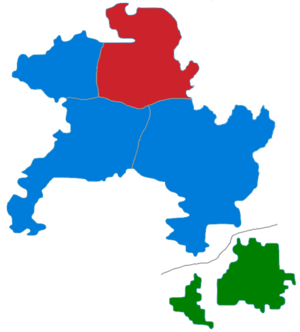Akashian general election, 1999
| |||||||||||||||||||||||||||||||||||||||||||||||||||||||||||||||||||||||||||||||||||||
400 seats in the National Assembly 201 seats needed for a majority | |||||||||||||||||||||||||||||||||||||||||||||||||||||||||||||||||||||||||||||||||||||
|---|---|---|---|---|---|---|---|---|---|---|---|---|---|---|---|---|---|---|---|---|---|---|---|---|---|---|---|---|---|---|---|---|---|---|---|---|---|---|---|---|---|---|---|---|---|---|---|---|---|---|---|---|---|---|---|---|---|---|---|---|---|---|---|---|---|---|---|---|---|---|---|---|---|---|---|---|---|---|---|---|---|---|---|---|---|
| Turnout | 84,2% | ||||||||||||||||||||||||||||||||||||||||||||||||||||||||||||||||||||||||||||||||||||
| |||||||||||||||||||||||||||||||||||||||||||||||||||||||||||||||||||||||||||||||||||||
 Most voted party by province | |||||||||||||||||||||||||||||||||||||||||||||||||||||||||||||||||||||||||||||||||||||
| |||||||||||||||||||||||||||||||||||||||||||||||||||||||||||||||||||||||||||||||||||||
A general election was held in Akashi on 25 December 1999. This was a snap election caused by the Shinobu Furukawa government losing a budget vote. According to the Constitution, the new National Assembly was only elected to complete the term of its predecessor. It is Akashi's last snap election, and the last not held in June.
The Shinobu Furukawa government had tenuously held onto power since the previous general election, but the parliamentary mathematics and increasingly fractious relations within the coalition made it unlikely to secure re-election. The Socialist Party was also emerging from its eclipse period, causing a simultaneous decline in the Communist Party's support after it had seized the mantle of left leadership for most of the decade.
With the snap election coming so soon after the last election, Ran Tsukuda led a centre-right campaign focused on the theme of stable government. Ran asked voters to give the Moderate People's Party and its ally the United Reform Party the support necessary for it to govern with centrist support, and to vigorously oppose the far-right. In one campaign speech, Ran said, "Tonight, I ask all Akashians to make sure that our country is not held hostage by the lunatics of the right."
The New Frontier Party suffered a loss in support as a result of its realignment to the light yellow bloc, and faced competition from the newly-founded Future Party.
Results
| General election, 25 December 1999 | |||||||||
|---|---|---|---|---|---|---|---|---|---|

| |||||||||
| Party | Party list | Constituency | Total seats |
+/- | |||||
| PR | % | +/− | STV | % | +/− | ||||
| Moderate People's Party | 1.328.546 | 21,0% | -1,0% | 1.319.079 | 20,9% | +0,4% | 100 | +16 | |
| Socialist Party | 999.573 | 15,8% | -0,9% | 839.414 | 13,3% | -1,1% | 77 | +5 | |
| Communist Party | 702.232 | 11,1% | -1,1% | 751.055 | 11,9% | -0,8% | 43 | -26 | |
| United Reform Party | 676.926 | 10,7% | +0,9% | 738.432 | 11,7% | +2,9% | 41 | +9 | |
| National Cooperative Party | 607.335 | 9,6% | -1,2% | 643.761 | 10,2% | -0,9% | 38 | -5 | |
| Green Party | 556.724 | 8,8% | -1,4% | 504.911 | 8,0% | -0,9% | 32 | -6 | |
| Future Party | 531.418 | 8,4% | +8,4% | 479.665 | 7,6% | +7,6% | 27 | +27 | |
| National Union | 316.321 | 5,0% | -0,5% | 271.389 | 4,3% | -1,3% | 14 | -2 | |
| New Frontier Party | 189.792 | 3,0% | -1,0% | 195.653 | 3,1% | -2,4% | 8 | -10 | |
| Conservative National Party | 151.834 | 2,4% | +0,4% | 189.342 | 3,0% | -0,2% | 6 | +1 | |
| Akashi Renewal Party | 139.181 | 2,2% | +0,3% | 176.719 | 2,8% | +0,2% | 5 | ±0 | |
| Independents | 126.528 | 2,0% | +0,5% | 201.964 | 3,2% | -0,2% | 9 | ±0 | |
| Total | 6.326.411 | 100% | — | 6.311.384 | 100% | — | 400 | — | |
| Registered voters and turnout | 7.513.552 | 84,2% | — | 7.513.552 | 84,0% | ||||
| Bloc strength | ||
|---|---|---|
| Bloc | Parties | Seats |
| Crimson bloc | CP, GP | 75 |
| Pale crimson bloc | SP, NU | 91 |
| Light yellow bloc | NCP, FP, NFP | 73 |
| Light blue bloc | MPP, URP | 141 |
| Dark blue bloc | CNP, ARP | 11 |
- Government: Moderate People's Party–United Reform Party–National Cooperative Party coalition.
The light blue bloc was the winner of the election, although its modest gain of 16 seats disappointed supporters who expected a stronger mandate. The MPP increased its seat count by 16, while the URP leapt into 4th place, gaining 9 seats.
The SP saw a mild drop in support but gained 5 seats. The CP lost 26 seats, failing to repeat its anomalously good showing in constituencies from the previous year. For the first time since 1986, the pale crimson bloc was larger than the crimson bloc.
The FP turned in a strong showing comparable to the NFP's own electoral debut, winning 7–8% of the vote and 27 seats. The NFP failed to match the challenge, collapsing to merely 8 seats.
The provincial electoral map saw only a minor change in that the MPP managed to win a plurality in Kagi, which had previously gone to the SP. This was sufficient to push the centre-right into a leading position.
Ran formed a coalition with the NCP, whose kingmaker status during the previous legislature had made them the centre of other parties' attention. Although her coalition technically had a minority of 179 seats, she relied on the support of the FP, which brought it to a majority, and if necessary the NFP and independents.



